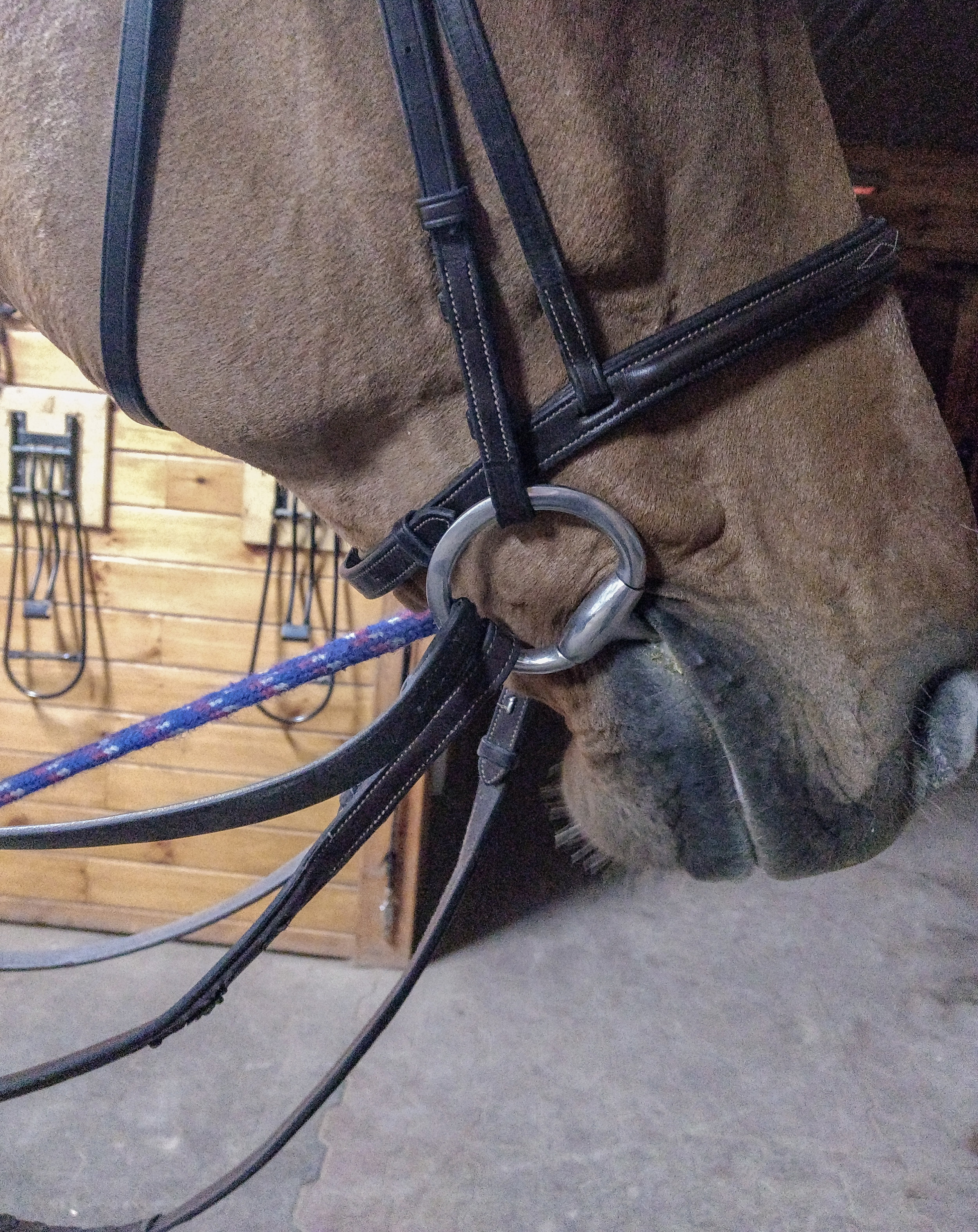Draw Reins
So lately I’ve been riding my flat work with draw reins.
At first, I was hesitant to use draw reins as I’ve never been a fan of putting a horse in a frame or in a situation that they aren’t doing voluntarily. But my coach insisted that I ride with the draw reins for reasons that I’ll mention later in this post. Needless to say, I’m not a hater of draw reins anymore.
So what are draw reins? A draw rein is basically an additional long rein. You attach one end to the girth, tread it through the martingale (if your horse has one), through the bit, back over their neck to meet your regular reins, through the other side of the bit and back to the girth. When you’re riding, you would collect your reins as if you were riding with a double bridle. So you would hold your snaffle rein regularly and then have the draw rein in between your middle and ring fingers. That way you can access both reins individually.
The idea is that you would collect the draw rein enough to put your horse into a frame. As you shorten that draw rein, the only way the horse can escape that pressure is to follow it and lower his head down and towards the girth. The purpose is to not only have him hold himself in this manner but to also encourage him to move properly and strengthen the right muscles that he wouldn’t want to use on his own.
So why is it bad? Well, like anything, a tool is as dangerous as the person using it wants it to be. If you pull those draw reins so tight that the horse doesn’t have any freedom to move his head at all or is behind the bit, you’ll do more harm than good.
Draw reins shouldn’t be used with the intention of forcing a horse to do anything. To tie him down and force him to move in the frame that the rider wants. Instead it should be used as a way to encourage the horse to move the way we would like. That means that the rein is tight enough that there’s a little pressure to encourage him to bring his head lower but still loose enough that he can still raise and lower his head as he naturally does throughout his gates.
So why do we use them? By keeping their heads and necks in a more proper position, we can encourage our horses to use their muscles more effectively. If they are used to riding with their heads too high or even inverted, they’re not using their backs. By lowering their heads, we can then work on strengthening their backs and developing those muscles. This will then in time mean that we can get the horse more engaged from behind which will then mean that the horse is now moving in a more effective and powerful manner.
My coach and I are also adding different exercises within the flat work to help build the horse’s muscles. Exercises such as raised trotting poles, half turns and spiraling circles. All of which are allowing the horse to build the muscles in his back and hind end. Asking him for something a little bit more challenging while keeping his head down to strengthen those muscles. You can definitely see and feel the difference in his performance from all of this work. Even if you’re just cantering down the long side of the ring. You can feel that he’s carrying himself much better than he used to.
For that reason, I’m no longer a hater of the draw rein. Sure, it can be a dangerous and abusive tool if you want it to be. But if you’re aware of that, you can use the draw rein as a helpful training tool to help build your horse to his full potential. If you’re not comfortable using draw reins, ask someone or a few people that you trust what their opinions are. Maybe even get someone experienced enough to watch you ride so that they can let you know if you’re using it correctly.
Let me know what your opinions are of draw reins. Are you for or against them?
Until next time, happy riding!





Curious to know if the Pivo pod is worth the hype?
I was too. And I want to share my experiences with you.
Click the link to find out if what I think of it and if you should get one.